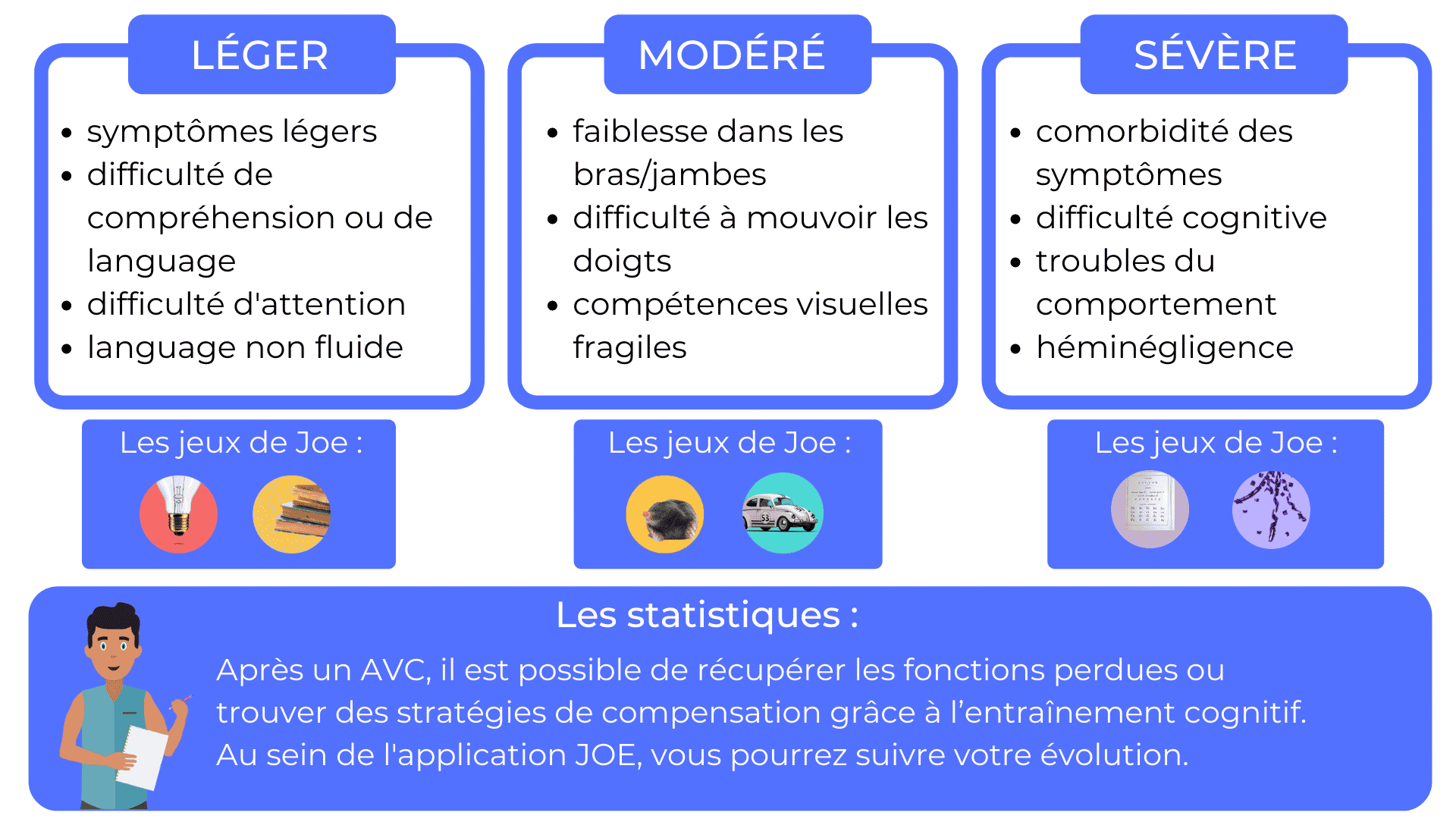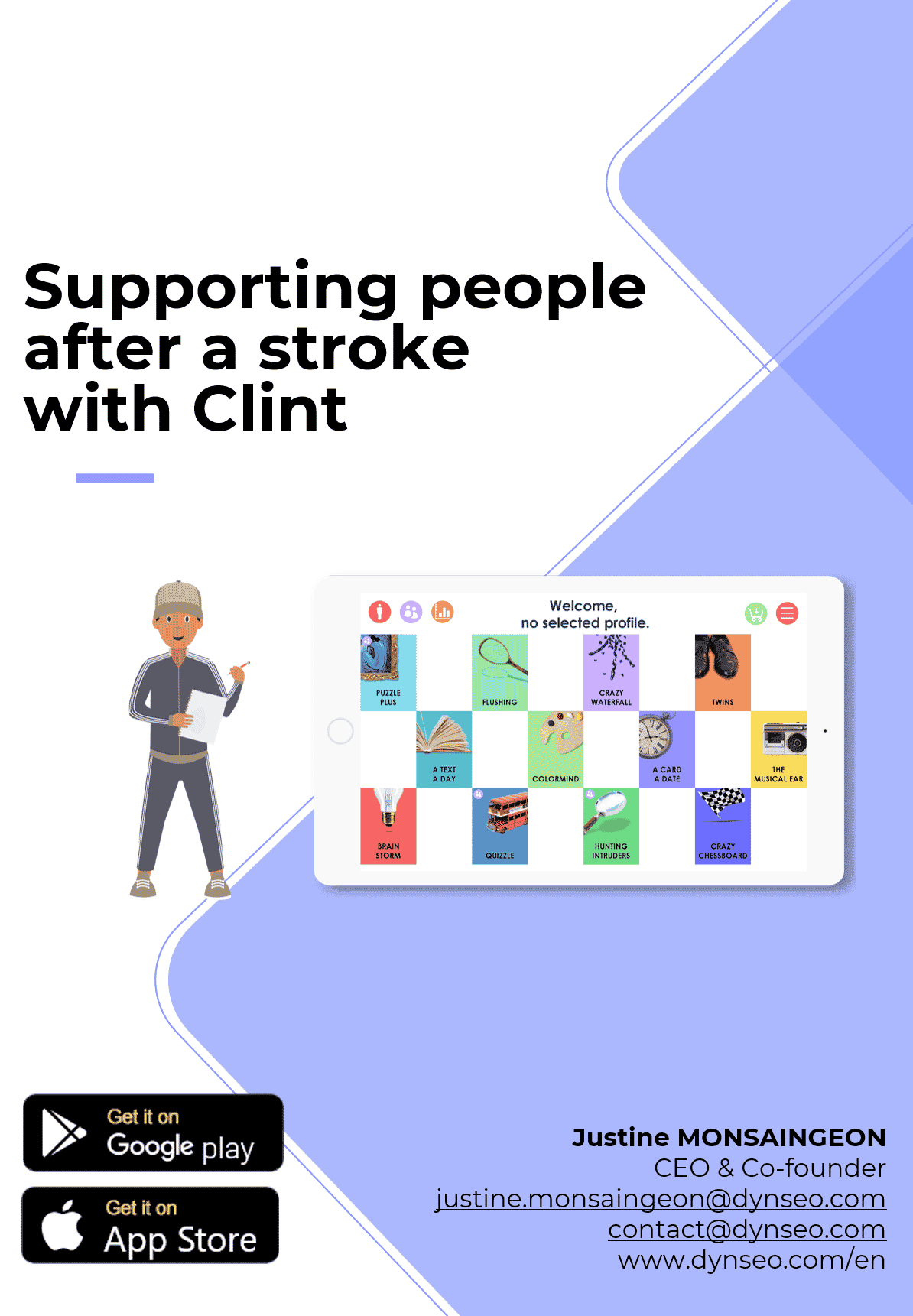The different symptoms of stroke
Some of the people reading this have had a stroke and we are aware of this. That’s why we decided to open a page dedicated to stroke, to bring my point of view, my advices and my different tests about this accidentand help you as soon as I can !
This is of particular interest to us because, as you know, our favorite subject is memory loss and its many remedies, and as you know, the victims of a stroke are also subject to memory problems.
To start our series on stroke, here is a presentation of the different symptoms:
A stroke is a lesion of the cerebral tissue which is due to an interruption of the blood circulation towards the brain, it is then not supplied with oxygen. Stroke causes cell death in the affected area of the brain.
You must know that your speed of reaction is crucial! Because if you react in the very first hours, you will be able to take advantage of the best treatments but also avoid more serious symptoms.
You will say to me, but how can we recognize a stroke? We’ve come to the point: to be able to detect a stroke quickly, you need to know the symptoms.
First of all, you feel numbness or paralysis on one side of your body such as your face, arm, or leg. Then other symptoms will appear:
- A weakness on one side of your body
- Visual problems such as vision in one eye
- Numbness or tingling in the face, arms or legs
- Dizziness, fall.
- Difficulty expressing oneself or understanding others.
- A severe headache and nausea
If you feel these signs, call for help immediately! or consult your doctor without delay.
Be careful, it should be noted that the people at risk are those over 65 years old, especially those whose blood pressure, diabetes, heart rate or overweight are not controlled, people who have already had a stroke, and those who suffer from sleep apnea, so be vigilant.
Supporting people after a stroke

Recognizing the signs of stroke
Recognizing the signs of stroke is very important for quick intervention. If the person is taken care of quickly, there is a greater chance of regaining lost skills.
Often it is the person himself or his relatives who must recognize the signs, since a stroke can happen at any time. We have already seen the signs of a stroke, but how to recognize them in practice and how to recognize them quickly?
The key word to remember is exactly this: FAST.
- Visage – Is it collapsed?
- Incapacity – Can you raise both arms normally?
- Torking disorder – Pronunciation disorder ?
- EExtreme emergency – Call 15.
This quick methodology was developed by the Heart and Stroke Foundation of Canada in 2014, you can find the link here.
What to do if you or someone with you has a stroke
The first thing to do is to call the emergency service or SAMU, 15, or the fire department, 18. Intervention within the first few hours after a stroke can increase the chances of rehabilitation.
If you are the one who had the stroke, don’t take the car, call an ambulance instead. If you think you can drive, the symptoms may become more severe.
There are also things not to do. Don’t lie down to rest, don’t wait to see if the symptoms go away, and don’t wait until you have severe pain before calling the doctor. Indeed, stroke can be painless.
Finally, even if it has been more than 4 hours, or if the symptoms have disappeared, go to the hospital to be checked.
What’s next?
After you have had a stroke, your doctor will give you medication and advise you to start a course of treatment with a health care professional. Often it is a speech therapist who takes care of people after a stroke.
During therapy, you can do exercises and activities to regain lost cognitive function. It is important to continue cognitive training also between sessions to keep the brain awake.
You can also use tablet applications that provide general cognitive stimulation. For example, you can test the Joe app, with more than 30 cognitive games. The games work on memory, attention, logic and language.
You can use this application with the speech therapist or at home between 2 rehabilitation sessions with the speech therapist.
Stroke rehabilitation
Other articles that might interest you:
No Results Found
The page you requested could not be found. Try refining your search, or use the navigation above to locate the post.




